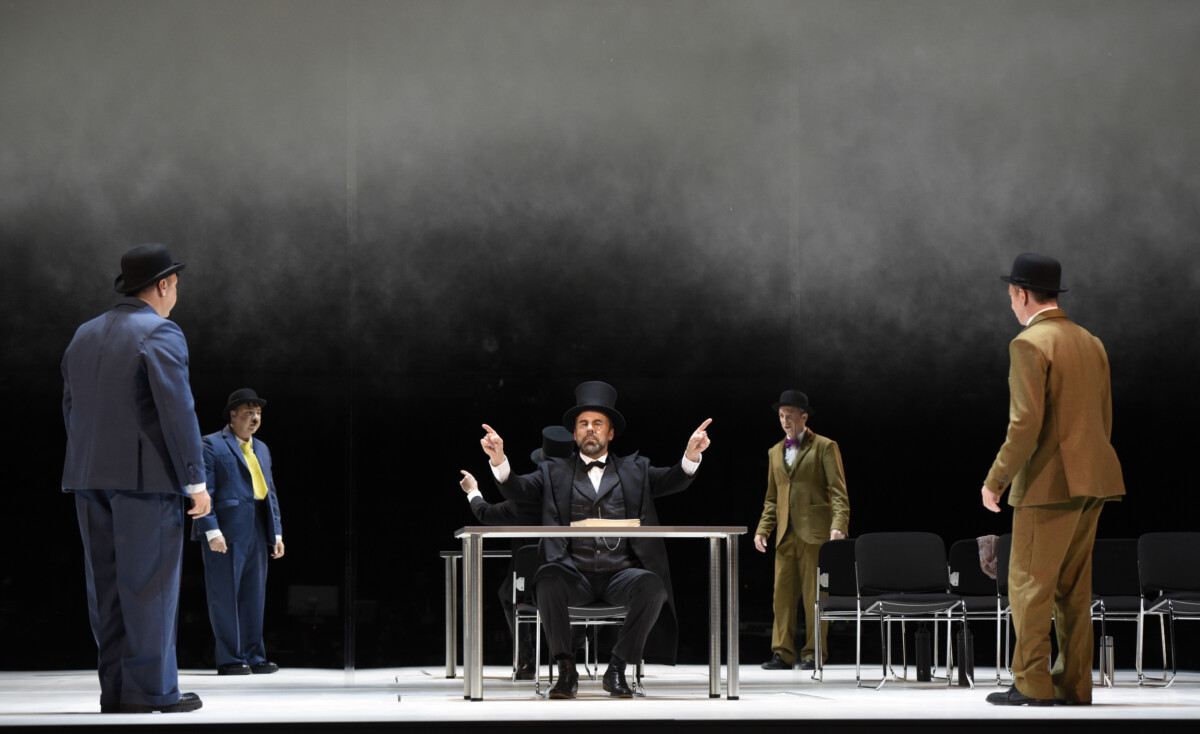This 2010 play by Larry Tremblay is a combination of meta plot lines and comedy
The Théâtre du Nouveau Monde production debuted on March 14, and follows the story of two actors who went viral in a buddy cop series. They are hired by a cunning director who puts on a play about John Wilkes Booth, the infamous actor known for Abraham Lincoln’s assassination.
The fictional director, renowned Marc Killman, expresses the idea that American entertainment has always revolved around violence and finding ways to control the people.
As rehearsals roll on, the tortured genius gets lost in a plethora of nuances that he bears down upon his actors, eventually completely losing track of the play’s theme.
Writer Larry Tremblay was inspired by what he calls “America’s schizophrenia,” or the political polarity in the United States: the extremely poor versus the extremely rich, Republican versus Democrat, North versus South.
“If I had to redefine my play today, in the era of post-truth in which we dove in, I would only choose one pair of antonyms: truth versus lie,” states Tremblay in the playbill. “And, with great pleasure, I would call my play Donald Trump goes to the Capitol.”
The playwright heavily twisted the presentation of the original theme by bringing layers of meta-fiction and absurdity, sending the audience in different directions. Each line had the audience questioning the direction in which the story was going. At times, it was even tough for the characters themselves to understand Killman’s ideas.
“It’s a show where the first time you read it you say to yourself, ‘Oh boy, what are we getting into?’ But that’s what’s the best part about theatre,” exclaimed Bruno Marcil, who played Marc Killman in TNM’s production of the play.
“We broke our necks for two months trying to understand what we were going to play, how we were going to play, and how we are going to approach it, and sometimes there were ideas that at the beginning held up the whole time, suddenly we said, ‘No that’s not it.’”
According to Marcil, the only script in his career that was tougher to understand was Les Hardings, a play inspired by the Lac-Mégantic disaster that follows three men, each named Thomas Harding, from around the world who are thrust into each other’s lives by the disaster.
Actor Didier Lucien, who makes a later appearance in the plot of Abraham Lincoln va au théâtre, explained that “[the] script is never portrayed the same from one day to the next. Yes we rehearse, but each character is completely different. Just when we thought we’ve understood it, we realize that we’re way out in left field, and we have to restart. We were like detectives for this script.”
According to Marcil, the team working on the play has fantastic chemistry, and it shows on stage. Luc Bourgeois and Mani Soleymanlou play protagonists Laurel and Hardy, and have been long-time friends.
“The four of us plus our director together were in stitches the whole time, but at the same time we can have fun and when it’s time to put our heads down we make things work.”
Director Catherine Vidal did a fabulous job turning this complex and dark subject into something understandable and intriguing for the audience. She was also able to bring humour and satire in at the perfect moments.
“The atmosphere during rehearsals was absolutely joyous because of our designers, engineers, and actors. Together, we were able to get through this cathedral script,” said Vidal.
I was at the edge of my seat trying to guess how much further the play within the play would be twisted, and what the next turn would be. This play was captivating, and brought me to unexpected audible laughs. I highly recommend you see it before the closing day on April 8.
